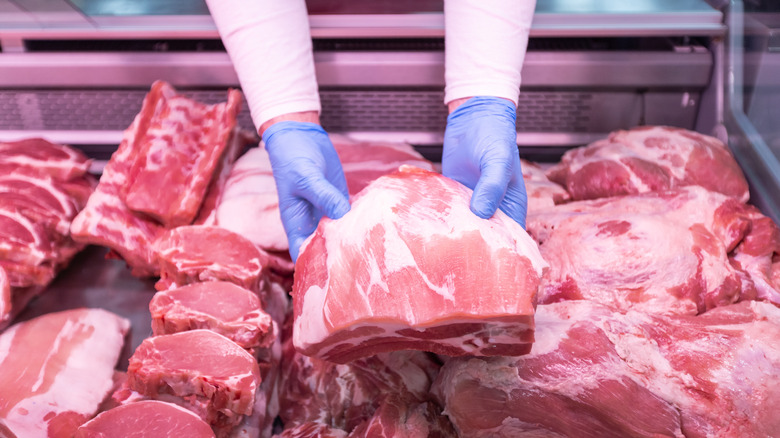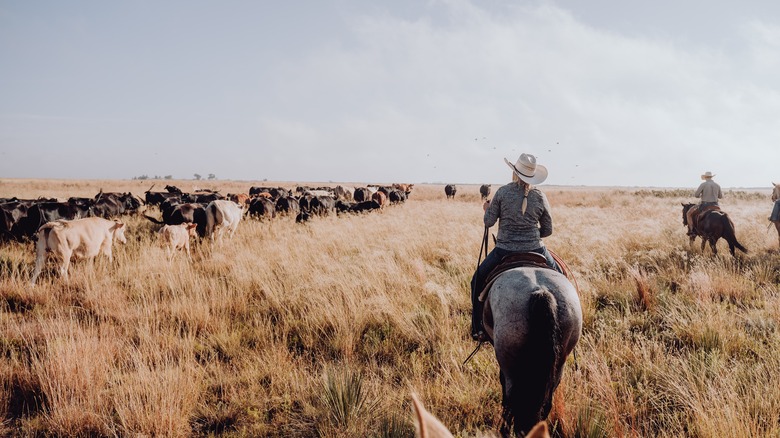How The Texas Drought Could Impact Future Beef Prices
Just when inflation seems to be slowing, there is a possibility that beef prices could remain high in the coming years, as Texas continues to face drought conditions.
Several factors have affected the price of beef products in recent years, including meat processing plant shutdowns during the pandemic, weather impacting cattle production, and the cost of cattle feed due to the ongoing war in Ukraine, according to The New York Post. However, so far in 2022, consumers have seen some reprieve in beef prices, according to the USDA, who reported that beef prices dipped 0.6% in June and that the price has stayed about the same for three months. On the other hand, prices for other meats, such as frankfurters and lunch meats, increased 1% in June and other meats have been hit even harder with a 12 to 13% price hike expected this year (per the USDA).
Texas has 14% of the total number of cattle raised in the U.S., according to the USDA, making it the number one state in cattle production. A cattle headcount in January 2022 indicated there were 12.7 million in Texas — down about 3% since last year.
Drought affects ranchers and cattle
As the Lone Star State continues to face drought conditions, the ranchers and their cattle are also impacted, according to Reuters. As a result, more cattle are being sent to slaughter in the state, which could in turn affect future prices of the commodity. Due to the dry conditions, there is a shortage of water for the livestock, resulting in pastures and crops dying out. As more cattle are sent to slaughter, the more likely it is prices will increase or remain high in the future, according to the Reuters article.
Texas isn't the only state losing cattle to weather conditions. The New York Post reported that in June, Kansas lost 2,000 cattle to heat stress. With ranchers facing extreme weather around the country, some have had to auction off their animals earlier than normal to reduce the number of older cows in the herd. According to The New York Post, the amount of cattle being raised in the United States could decrease by as much as 20% if the dry conditions persist.

